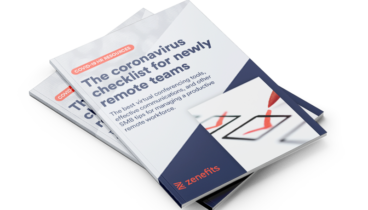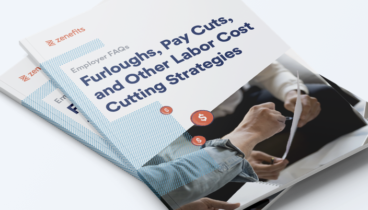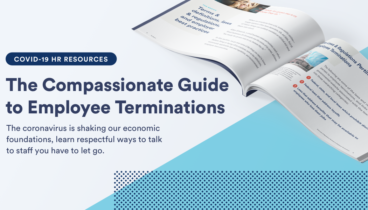The CARES Act is providing additional funds for states to expand unemployment benefits to previously eligible workers and sectors of the workforce that were not covered before.

Here's what you need to know:
-
The Coronavirus Aid, Relief, and Economic Security (CARES) Act is providing additional funds for states to expand unemployment benefits
-
The Pandemic Unemployment Assistance section provides an additional 13 weeks of coverage, bringing most workers UI payments through December 31, 2020
-
Workers who quit their job without a legitimate COVID-19 cause, those who refuse to work, or those fail to return to work after being recalled will be ineligible for benefits under state UI rules and the PUA
Due to the COVID-19 crisis, millions of American workers have lost their jobs. Some estimates say 10% of the nation’s workers filed for unemployment insurance benefits over a period of 3 weeks. Under state — and now federal — laws, claims for unemployment insurance benefits are exploding.
The Coronavirus Aid, Relief, and Economic Security (CARES) Act provides additional funds for states to expand unemployment benefits to previously eligible workers, as well new sectors of the workforce that were not covered before. The fund is also providing additional money to workers affected by the virus under the Pandemic Unemployment Assistance section of the Act.
Who pays unemployment insurance?
Unemployment costs are taxed and funded at the state and federal level. Employers pay Federal Unemployment Tax Act (FUTA) tax at 6% of employee wages earned for the first $7,000 salaries paid. That amount can be reduced (and generally is if employers also contribute through state taxes) by a 5.4% credit to 0.6%. State Unemployment Tax Act (SUTA) taxes vary by location. They can range between 1% to 8% of employee annual taxable earnings.
Workers receive unemployment insurance benefits through their state unemployment insurance (UI) systems. On average, UI provides workers about half their week’s earnings, generally with a minimum and maximum payout. States determine the payment amount. The lowest paid claims are received by Washington, D.C., workers, at 21%; the highest is in Hawaii at 55%. Most states pay benefits up to 26 weeks.
States typically require workers to meet a minimum of previous weeks on the payroll to earn benefits — generally 6 months. They also have criteria on who is eligible for benefits and how much they will receive based on the amount they and their employer gave to the state funds. Most states exclude part-timers, the self-employed, and other categories of workers from benefits eligibility.
What’s new for unemployment insurance under the CARES Act?
The $2 trillion CARES Act expands UI benefits in a number of ways. The Pandemic Unemployment Assistance (PUA) section provides an additional 13 weeks of coverage, bringing most workers 39 weeks of UI payments. This is through December 31, 2020.
The PUA also adds an additional $600 per week, which the federal government funds, to employee UI checks through July 31, 2020. This additional funding may bring employee earnings up to or higher than 90% of their typical wages.
Through December 31, 2020, the PUA has loosened the criteria for eligibility for workers covered by their state UI systems. Previously, these employees were not eligible for coverage, but they will be under the PUA:
- Part-time workers
- Independent contractors
- Freelancers
- Self-employed
Workers who are not laid off or furloughed, but who cannot work because of their responsibility as a caregiver, either for a family member diagnosed with COVID-19 or a child whose school or daycare is closed, are eligible for benefits under the PUA. The Act allows these workers to apply for and receive benefits they would not have been eligible for under state plans because they can no longer work due to no fault of their own.
The Act also waives any state work history requirement, allowing workers with only a minimum time on the job to be eligible for benefits. These previously excluded workers will be eligible for the average UI payment in their state for the entire 39 weeks, with the additional $600 per week through the end of July. The PUA will fund all the additional payment requirements from the federal level at no cost to the states.
However, with the influx of claims, state systems are currently processing an overwhelming amount of requests and will likely need additional funding to support the monies they must pay.
Will layoffs during COVID-19 impact employer future unemployment insurance rates?
All states use their own formula to calculate the rate an employer has to pay for UI taxes. The rate is based on the history and experience (volume and dollar amount of claims) the employer has had in the past. In general, states calculate that rate and base it toward a 3-year moving forward period. Essentially each claim can increase an employer’s tax rate for up to 3 years into the future.
The PUA has not provided states with any guidance to date on whether the volume of claims will affect an employer’s future tax rate. Unless and until specific information is provided by the federal government, it’s safe to assume contribution rates will increase based on employer experience throughout the pandemic.
The PUA also adds an additional $600 per week, which the federal government funds, to employee UI checks through July 31, 2020. This additional funding may bring employee earnings up to or higher than 90% of their typical wages.
How does unemployment insurance work for people with commission-based salaries?
Workers who earn wages on a commission-only basis typically do not pay into their state’s UI systems and are therefore ineligible to receive benefits when they are out of work. Self-employed or pass-through corporation workers may be in the same category.
While their individual state UI systems may deny a claim for benefits, these workers may be eligible under the PUA. Some states are providing guidance — outlining if a worker is denied under their state program, they may still apply for the $600 per week funded under the PUA through July 31, 2020. Employees will need to check with their state UI system for eligibility and application information.
Employees will need to check with their state UI system for eligibility and application information.
For commissioned workers and the self-employed, PUA funds of $600 per week will be provided through July 31, 2020. Federal guidance allows workers seeking PUA funds to provide self-certification to support their claim.
How will unemployment work for people who make tips?
Tipped workers, depending on their state, may earn only a minimum of taxable income while the remainder of their wages come in the form of tips. In some states, tipped workers only need to receive $2.35 per hour worked. In other states, tipped workers must receive the minimum wage set by the state. Because these workers have contributed at least some taxable income on which UI taxes were paid, they should be eligible for both state and federal unemployment benefits.
What if an employee works less hours during the outbreak?
Most states determine what level of benefits an employee can receive if they have to work less hours but still have employment. In most cases, part-time earnings cannot exceed the state’s weekly benefit amount (WBA). Many states require workers to report hours per week worked, using that amount to reduce the amount of UI benefits paid.
Employers looking to assist their staff members with state and federal UI funding will need to understand their state’s guidelines on part-time work and/or assure their employees do not exceed their state’s WBA limits.
What happens if workers earn more with UI or refuse work?
Many have concerns that the additional $600 funding to UI will put workers in a difficult position. They may be earning more in unemployment benefits than they did with their regular wages. For lower income workers, it may be difficult to make the decision to work and take, essentially, a cut in pay, if only through the end of July. This may pose a challenge to employers as they try to maintain staffing levels.
Additional funding and extended benefits provided under the PUA do have exceptions that may negate this “overpayment” effect. Workers who quit their job without a legitimate COVID-19 cause, those who refuse to work, or those who fail to return to work after being recalled will be ineligible for benefits under state UI rules and the PUA.
If an employee quits without cause or refuses to come back to work when their job is available, they can be disqualified for UI and PUA payments. Almost every state has a process for employers to notify their agency when an individual should be denied benefits under these situations.
Workers who quit their job without a legitimate COVID-19 cause, those who refuse to work, or those who fail to return to work after being recalled will be ineligible for benefits under state UI rules and the PUA.
What if employees aren’t recalled?
As the pandemic continues to pressure businesses, many predict some companies will shutter their doors for good. For employees who lose their jobs due to closure, UI will still be in force through the end of the year for state payments and through July 31, 2020 for PUA.
Still, other employees may be laid off or furloughed during the outbreak and may find other employment. For these staffers, UI benefits will cease as soon as their new employer begins reporting their income.
As COVID-19 continues to put pressure on workers and businesses around the globe, state and federal government agencies are trying to fill the economic void the pandemic has created. Many workers are seeing delays even signing up for UI benefits, as states are working to add staffers and resources to manage the influx. This unprecedented challenge to our workforce will have a lasting effect on businesses, workers, and the economy.







